MEDICINAL PLANTS: nature does not need medicines
Our ancestors quickly learned to distinguish plant species that were edible, toxic and suitable to cure bodily diseases. This discovery was not achieved from one day to another. At first, the use of plants was natural, so experience taught them the influence of each medicinal plant. On the other hand, their curiosity for animals, which later became a desire for food and domination, led them to observe what and for what they ate and to acquire their experience. Therefore, this initial instinctive knowledge became a wisdom based on experience and observation, although it is not yet known to explain the influence of medicinal plants.
Plants, natural medicines
The knowledge of medicinal plants has been transmitted over the centuries from generation to generation, first orally (with its consequences) and then in writing. Due to oral communication several errors arose and writing contributed to avoiding errors. Therefore, when writing was invented, the descriptions of the plants and how to use them appeared in writing and so have remained to date.
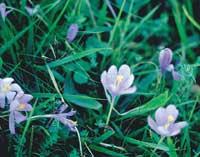
However, in these early writings there are many errors, in which only the morphological characteristics were taken into account to classify the herbs, since the systematic that is known to this day was not yet developed. In addition, many herbs were classified with the popular name, which often helped create confusion. For example, the same species has been given two denominations (the nobility Laurus has been called laurel and laurel) or the same name has been used to designate two different species (for example, the species Digitalis purpurpurea and Aquilejia vulgaris have been called kupraka).
However, many of the classifications and uses of medicinal plants have been maintained to date for their effectiveness, although the methods of that time, as has been said, have not been developed. Still today we have many problems to classify plants and there are still many plant species that we do not know.
On the other hand, once the plants were classified, they were chemically analyzed to know their components and their active compounds. The influence of medicinal plants is not on leaves or trunks, but on the chemical compounds produced by the plant itself as alkaloids, glycosides, saponin, terpene, tannin, etc. When the man realized it, he tried to produce chemically analogous of these compounds, which would allow him to have more access to remedies of medicinal plants (in addition to being able to store in smaller places, facilitated much the dosage), at the same time he would get to homologate the different treatments, although in many cases with different consequences.
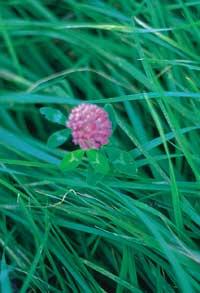
However, it must be taken into account that certain substances obtained from medicinal plants and their synthetic analogues can have different effects, which is demonstrated experimentally and, for example, both products can have a different absorption. In addition, the number of components generated by each plant is very broad and in many cases cannot be synthesized chemically. Therefore, when treating a certain disease, instead of using one or more synthetic compounds, it is more convenient to consider the medicinal plant as a whole, using all the compounds it contains.
This does not mean that current medications are not useful, they are often totally necessary to cure a disease, but to some extent. Phytotherapeutic recipes, besides being very natural, are very suitable to cure many diseases, but we should not rule out synthetic drugs. Despite being synthetic products, they are the result of numerous research and are designed to cure increasingly specific diseases and their impact is very fast. Therefore, the function of these two areas of medicine is the same, the healing of diseases, and both are necessary. Unfortunately, today's society has left its health in the hands of chemistry, rejecting and despising all that nature has given it.
But it's not all lost! Recently phytotherapy is reinforced and, in addition, in our crazy society, more and more give natural values the importance they deserve. As for the use of medicinal plants, we can think that we are in a new era, since with the means we currently have (laboratories, greenhouses, etc. Phytotherapy has become a modern science, moving away from the ancient legends and sorceries.
Forest harvesting
First of all we have to know our surroundings, on the one hand, to know where the plants are and, on the other, to take herbs in uncontaminated places. In fact, we will use plants that have not been in contact with the pollution of industry and cars, and that have been out of fertilizers and chemicals used in agriculture.
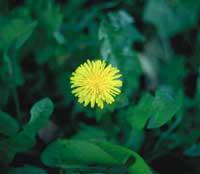
The beneficial effect of medicinal plants is achieved by joining the plant and manipulating and transforming it. To begin with, we have to know the plant we want to use, so that there are no errors in its collection, as well as know what part of the plant will be used to cure our disease, since depending on it, we will have to collect it in one time or another. For example, when the flowers are to expand or you have to join them before doing so, while the roots will be taken in spring or autumn, when all the principles are accumulated or with the thorns of the plant.
When leaves are needed, when the plant is developing, the ideal is to unite them before beginning to bloom, since most of the active compounds will accumulate in the flowers. The seeds will be collected in autumn, when the plant is fully ripe, and if the surfaces are developed, they can be collected at any time of the year. Since all the exposed can vary depending on the plant to join, you will have to choose the most appropriate form in each case. Needless to say, protected plants cannot be taken, so be careful!
Once the plants are collected, they will proceed to their immediate drying, that is, to slowly remove the water they contain so as not to damage all their properties and preserve them. This process is carried out in ventilated and dry places, protected from the sun, dust and humidity. To the extent possible, it is best to unite the plants throughout the year (we can plant them in our garden) and use them as they are collected, but when this is not possible, do not worry, since the dry plants maintain their properties throughout the year.
Recipes for the consumption of medicinal plants
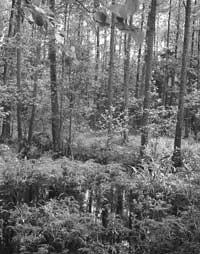
But, how should we prepare these medicinal plants to cure or relieve our diseases? Here we will give especially recipes that anyone can prepare at home. We have to process the plant (or a specific part of it) to obtain the desired substances. There will be some very simple transformations, others very complex and that we will not be able to carry out, but pharmaceutical or other specialist. Let's explain some of these transformations.
These transformations can be done in many ways, but always in the face of the effect we want to achieve. For example, many applications must be made outside the body. Some of them will be for skin application: ointments, powders, soaps, etc. Additional inhalation. Among those with internal application, some will be swallowing solutions and others will be prepared to inject. In the latter case, sterilization will be totally necessary.
For the use of medicinal plants, the four main pathways are exposed:
- One of the simplest transformation processes is the preparation of infusions. This method allows us to obtain the principles that exist in the soft parts of the medicinal plant (flowers, leaves and buds) and the compounds that evaporate. To perform the infusion we must pour the water that boils to the plant we want and then leave it macerate. Use dry herbs, since in the absence of water the principles will be more concentrated. It is convenient to cover the infusions to avoid evaporation of the healing principles, in addition to getting those concentrated in the steam to condense and reincorporate in the infusion. Once this is done, we only have to filter. Happy! For example, infusion of a asparagus (Geranium robertianum) helps to remove diarrhea and also acts against diabetes. On the other hand, the infusion of the ivy (Hedera helix) will make menstruations not so painful. The infusion with leaves and flowers of the white hawthorn ( Crataegus monogyna ) against circulatory problems is perfect to prevent our ancestors from rubbing the animals with the infusion of the chicory ( Cichorum intybus ).
 The txikori Cichorum intybus is known worldwide. It has been used to help cure a gout, anemia, malaria, anorexia, etc. When manipulating it is necessary to take into account its peculiarities, for example, the development of the leaves in autumn and the obtaining of the plant is carried out wilting, while the flowers are photosensitive, so they are closed with light.
The txikori Cichorum intybus is known worldwide. It has been used to help cure a gout, anemia, malaria, anorexia, etc. When manipulating it is necessary to take into account its peculiarities, for example, the development of the leaves in autumn and the obtaining of the plant is carried out wilting, while the flowers are photosensitive, so they are closed with light. - When it is difficult to acquire the principles contained in the trunks or take a long time to pass to the solution, it is used cooking. In these cases we will place the parts of the plant (roots, bark, fruits and hard leaves) in the water and keep them boiled for a while. Once cooled let decrease the solution obtained before filtering. The application of this method implies the loss of the active ingredients that evaporate and in the obtained legume will never appear all the principles present in the plant. In fact, cooking is a process of drastic transformation that can cause the loss or transformation of some herbaceous compounds. Therefore, depending on what we want to get, we will use this method or the smoother previous one. On the other hand, there are authors who say that maceration of the parts of the plant before boiling, will make these parts soften and it is easier to acquire the principles. The cooking of aceribuztana ( Equisetum telmateia ) will be used against conjunctivitis and the root of the harvest ( Rumex acetosella ) when it is necessary to fight hepatitis. When you see that you are losing your hair, you can clean your head with the birch legume (Betula pendula) and close your wounds well with the skin and the birch leaves.
- Another method is maceration and is used in those cases in which the active substances of the plants are weldable in cold waters. If we leave the medicinal herb a few hours in cold water, all the principles will remain in the solution. Depending on the plant part used, we should stay more or less hours in the water, for example, in the case of leaves and flowers it will suffice to keep them from 6 to 12 hours, while the root and skin should remain in the water about 24 hours. In any case, the process should not be prolonged too long since there may be fermentation or appearance of fungi. Medicinal plants can also be alcohol, oil or wine. Macerating the spring flower ( Primula veris ) and keeping it in olive oil for 30 days, the reumes and burns pass faster. If we want to polish the skin, in daily cleaning we will use the maceration solution of the arce petals ( Canine rose ).
 The Urica dioca that appears in the image is recommended for almost all diseases. In Euskal Herria has a great tradition and was formerly used as ointment against rheumatism and bronchitis. The system will be effective, of course, but it is not very nice.
The Urica dioca that appears in the image is recommended for almost all diseases. In Euskal Herria has a great tradition and was formerly used as ointment against rheumatism and bronchitis. The system will be effective, of course, but it is not very nice. - The extraction of juices is also a transformation used. For this purpose we will use a fresh plant with a high proportion of water. To obtain the juice, just put the plant in the mortar with a little water or use the juice machine, to obtain the mineral salts and all the vitamins of the grass. However, with this method we will not achieve all the principles of the plant, but since the extraction of substances is done cold, its structure will not be altered, but if the result is heated is different. Mixing the juice of the Txikoria ( Cicamarum intybus ) with the honey we will get to remove the intestinal worms. If the problem is the pain of the ears, we will add a few drops of the juice of the shepherd sack ( Capsella bursa-pastoris ) to the ear.
Besides these four methods there are others like: knives, lotions, touches, syrups, dyes, oils, inhalations, essences, etc. In most cases, in addition, the aforementioned processes are achieved by slightly modifying.
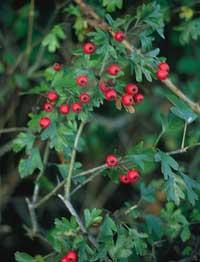
The products obtained by these methods also have their limitations. The solutions obtained include a series of biological compounds that, by participating in the processes of oxidation and fermentation, can produce alterations in the medicinal substances obtained. To avoid this, preservatives can be added, but we would add chemicals. Note that the result obtained will no longer be entirely natural, that is, it will be obtained through chemical transformations. Therefore, it is preferable to add a little sugar or alcohol to the solution obtained to keep it a little more.
As we have seen, it is much what medicinal plants offer us and it is very easy to seduce them. As mentioned, the number of active compounds that each plant can produce is huge. Therefore, nature can be a great store to cure diseases and, in addition, all these remedies offer us for free as flowers, seeds, leaves, roots and fruits. Many diseases can be cured with a better study and knowledge of plant species. It would be regrettable, therefore, that these alternatives were lost and that by chance they fell into the world of synthetic drugs.





